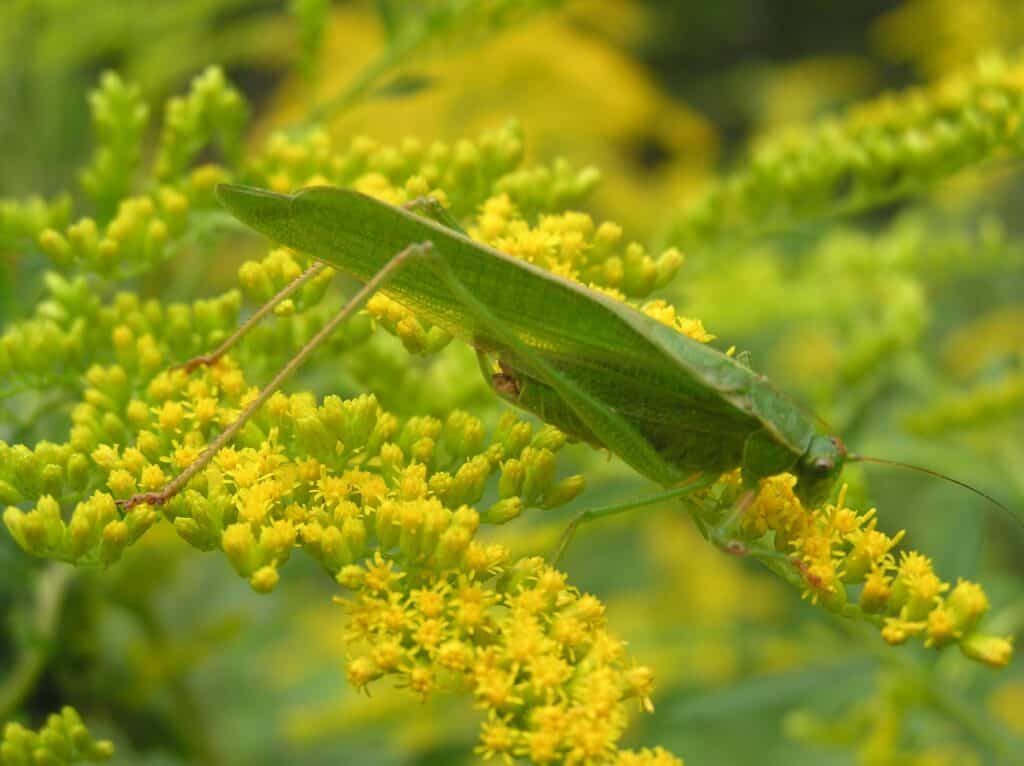Take time to learn and appreciate the songs our backyard insect musicians
Peterborough Examiner – August 4, 2023 – by Drew Monkman
From mid-summer until the first frosts, wetlands, fields and even suburban backyards hum with the calls of insects. Most of the time, however, we relegate these familiar sounds to the status of background noise. This is a shame. As nature recordist Lang Elliott writes “… most of us seem perpetually confused about which insect is making which sound, and we have no established aesthetic that helps us enjoy the beauty and communicate our appreciation to others.”
In China and Japan, insect songsters have long been celebrated by the poets. Some species were given endearing names like “yabu-suzu” (little bell of the bamboo grove) and “aki-kaze” (autumn wind). City dwellers used to take fall vacations to the countryside to appreciate the inherent beauty of insect songs and choruses. It even became fashionable to keep singing insects as pets – just for the sheer pleasure of hearing their songs through the winter months.
For me, it’s always a pleasure on a late summer evening to imagine in my mind’s eye all of the various insects – some hidden in the grass and others high in the trees – pouring out their sonorous message of desire to the opposite sex. There’s also satisfaction in knowing which species are calling and how the sounds are produced.
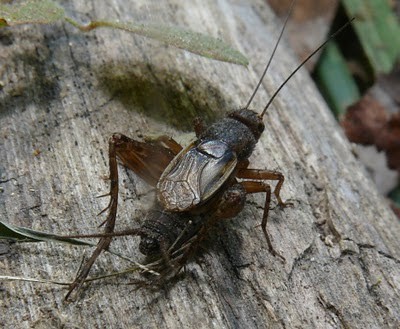
How they call
The vast majority of insects that use sound as a means of attracting a mate belong to the order Orthoptera which includes crickets, katydids and short-horned grasshoppers (locusts.) The other main group are the cicadas. As with most bird species, it’s generally the males who call. Unlike birds, however, insect calls do not have a recognizable melody. Rather, they are typically composed of identical sounds repeated at regular intervals.
Most insects use stridulation to produce their song. Like a violin string being “scraped” by a bow, one body part is rubbed against another. In the case of katydids and crickets, the insects elevate their forewings and then rub them rapidly together. The base of one wing has a hardened edge while the base of the other has a toothed area. Each time the hardened edge hits a tooth, a click is produced. Because the rubbing occurs so fast, the individual clicks blend together and sound like chirps (a short burst of notes) or trills (a longer-lasting, continuous train of notes).
As for short-horned grasshoppers, one of the hind legs is rubbed over a projecting vein, or scraper, on the forewing. Each hind leg has a row of about 80 fine spines which vibrate like the teeth of a comb. In some species, the songs are so high-pitched that they are nearly in audible. One group of short-horned grasshoppers known as band-wingeds have opted for “crepitation” to get the female’s attention. By snapping their banded hindwings together in flight, they are able to produce surprisingly-loud crackling sounds.
The shrill, high-pitched drone of cicadas is produced in an entirely different manner. Male cicadas have a pair of sound-producing organs called tymbals. They are similar in shape to tiny drum heads and contain ribbed membranes. In dog-day cicadas, our most common species, the tymbals are white in colour and located on top of the abdomen near the bases of the wings. Muscles distort the tymbals causing them to bend rapidly back and forth, creating pulses of sound. Because the male’s abdomen is hollow, it acts as a resonance chamber. At up to 100 decibels, the sound is incredibly loud and often compared to the whine of an electric saw.
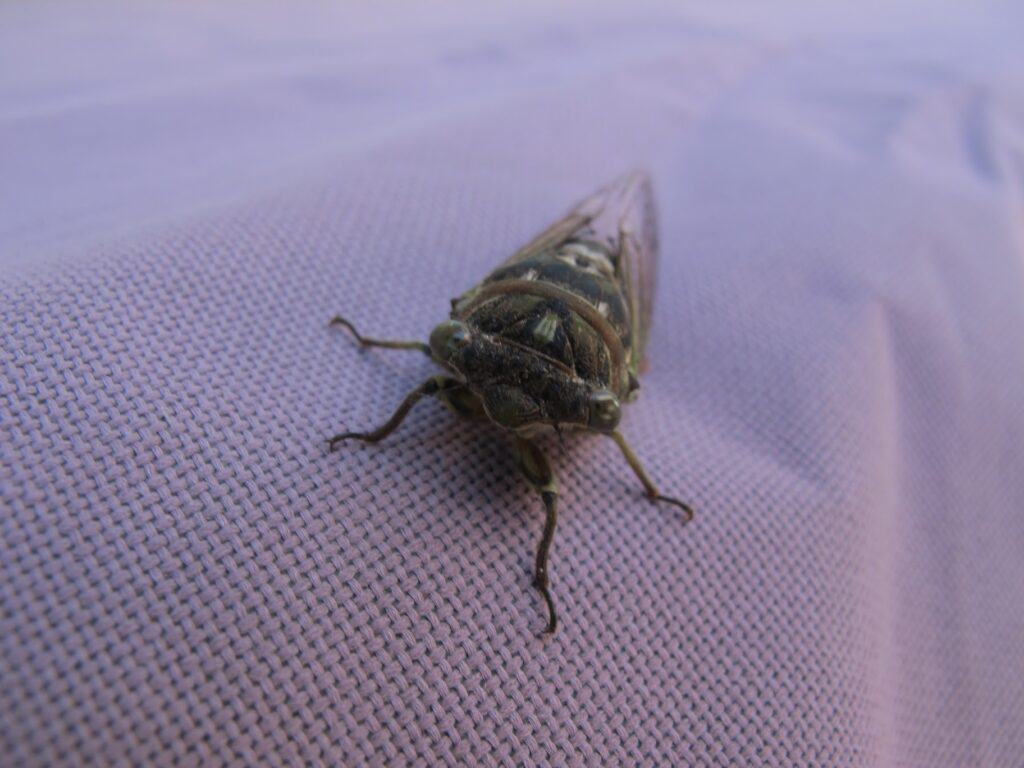
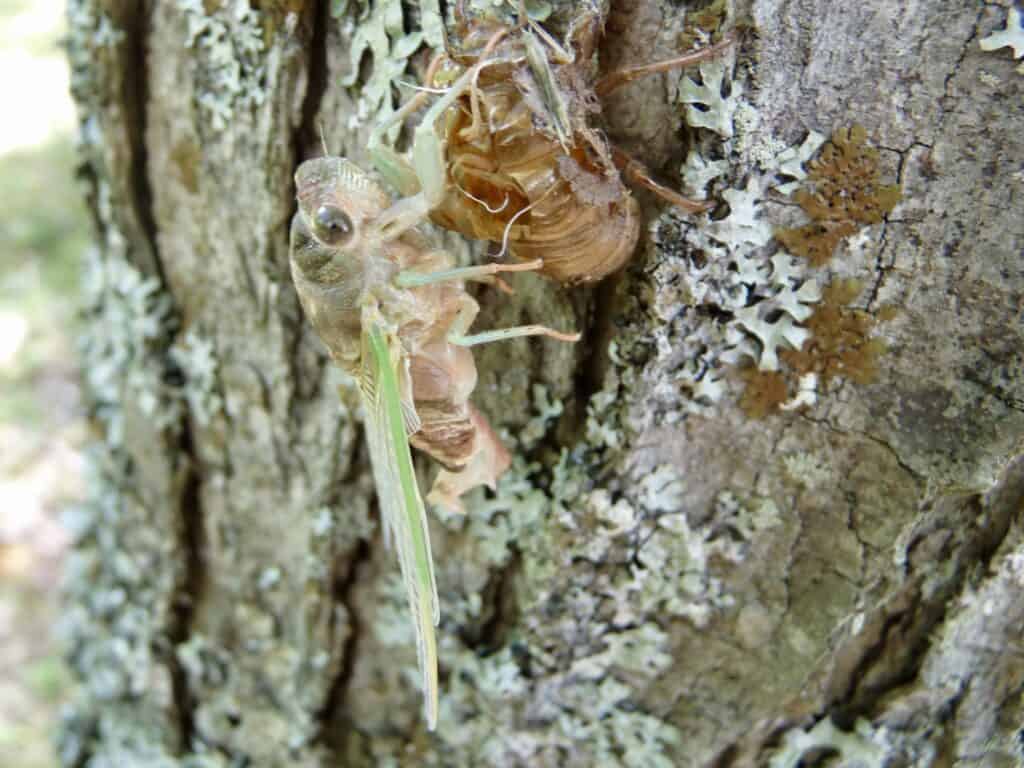
Some common species
In our yards, crickets are usually the most numerous insect songsters. The best known members of this group are the field crickets (Gryllidae). They are black, about 2 cm in length and produce clear, loud chirps given at one per second. However, most of the cricket song we hear actually comes from much smaller insects known as ground crickets (Nemobiinae). Less than 1 cm in length, they create a non-stop wall of sound both day and night. Their song is a rapid, buzzy, single-pitched trill. A common local species is the Carolina ground cricket.
Cicadas do their singing from tree trunks and branches, often high overhead. They usually sing loudest during the hot, early afternoon, which explains their nickname “heat bugs”. Listen for a loud, high-pitched whine, lasting about 15 seconds. It starts off soft but grows louder.
Katydids (Tettigoniidae) have long antennae and bright green coloration which provides excellent camouflage. The bush-katydids (Scudderia) are included in this group, and several species are both common and very vocal. Two to three centimetres in length, many produce a short, electric “teeth of a comb” sound. One species to listen for in upland meadows of goldenrod and asters is the broad-winged bush katydid. It sings five groups of buzzing notes as it “counts” from about two to nine. Listen for 2-3 notes (pause) 4-5 notes (pause) 5-6 notes (pause), etc.
When most of us think of grasshoppers, we think of short-horned grasshoppers, also known as locusts (Acrididae). Children love to catch red-legged grasshoppers (Melanoplus femurrubrum), a yellowish grasshopper with red legs. Surprisingly, these grasshoppers do not produce any audible sound. Another conspicuous species is the Carolina locust. It produces crackling snaps or clicks in flight and shows an eye-catching yellowish border on its dark hindwings. At first glance, it can easily be mistaken for a butterfly. Watch for them on gravel roads and rail-trails.
Nature’s thermometer
In wooded areas and sometimes in gardens, the voices of tree crickets (Oecanthinae) can also be heard. One species of particular interest is the snowy tree cricket. It’s pale green in colour and sings mostly at dusk on warm evenings. Its rhythmic calling is one of the most beautiful night-time sounds of late summer. To me, it sounds like a rich, gentle-voiced spring peeper singing a soft, non-stop “treet, treet…” This is the insect that you typically hear calling in the background during campfire scenes in cowboy movies. Also known as the thermometer cricket, it’s possible to calculate the air temperature by the frequency of the calls. By counting the number of chirps in eight seconds and then adding five, you can closely estimate the air temperature in degrees Celsius. The warmer the temperature, the faster the insect calls. Also listen for the four-spotted tree cricket. Little more than 1 cm in length, it delivers a continuous, toad-like trill both day and night
To learn more about singing insects and to listen to recordings, go to http://songsofinsects.com/ . There’s also information on finding and watching who’s singing and how to keep insect songsters in captivity “to enjoy their songs long after frosts have killed adults in the wild.” YouTube is another great resource. Let’s hope there’ll soon be an app, too, that will identify insect sounds directly!
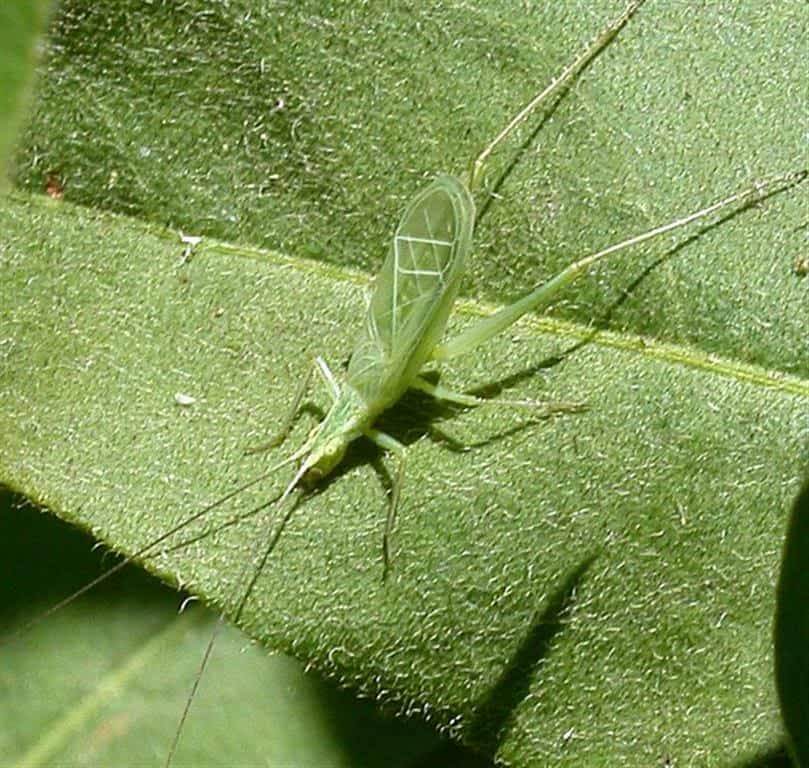
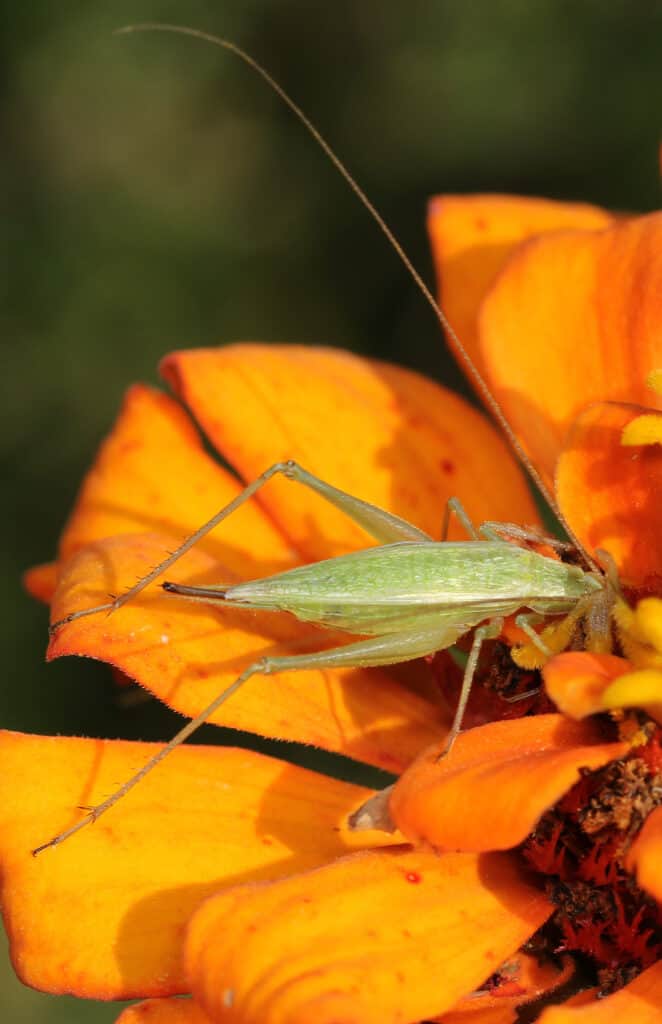
Climate Chaos Update
Alarm: On July 25, a new study published in the journal Nature found that a vital system of ocean currents is close to the “tipping point” and could collapse within a few decades – or as soon as 2025 -if the world continues to pump out planet-heating pollution. Known as the Atlantic Meridional Overturning Circulation (AMOC) – which the Gulf Stream is a major part of – it takes warm surface water from the tropics and distributes it to the north Atlantic. It’s an irreversible event that would be catastrophic for global weather. It would suddenly give England and France a climate similar to southern Canada and do huge damage to these countries’ ability to grow food. It would also mean more heating up of northern Africa and bring more extreme weather to eastern Canada. To learn more, go to https://tinyurl.com/49t99nuv
Carbon dioxide: The atmospheric CO2 reading for the week ending July 29 was 422.53 parts per million (ppm), compared to 418.03 ppm a year ago. Rising CO2 means more global heating ahead.
